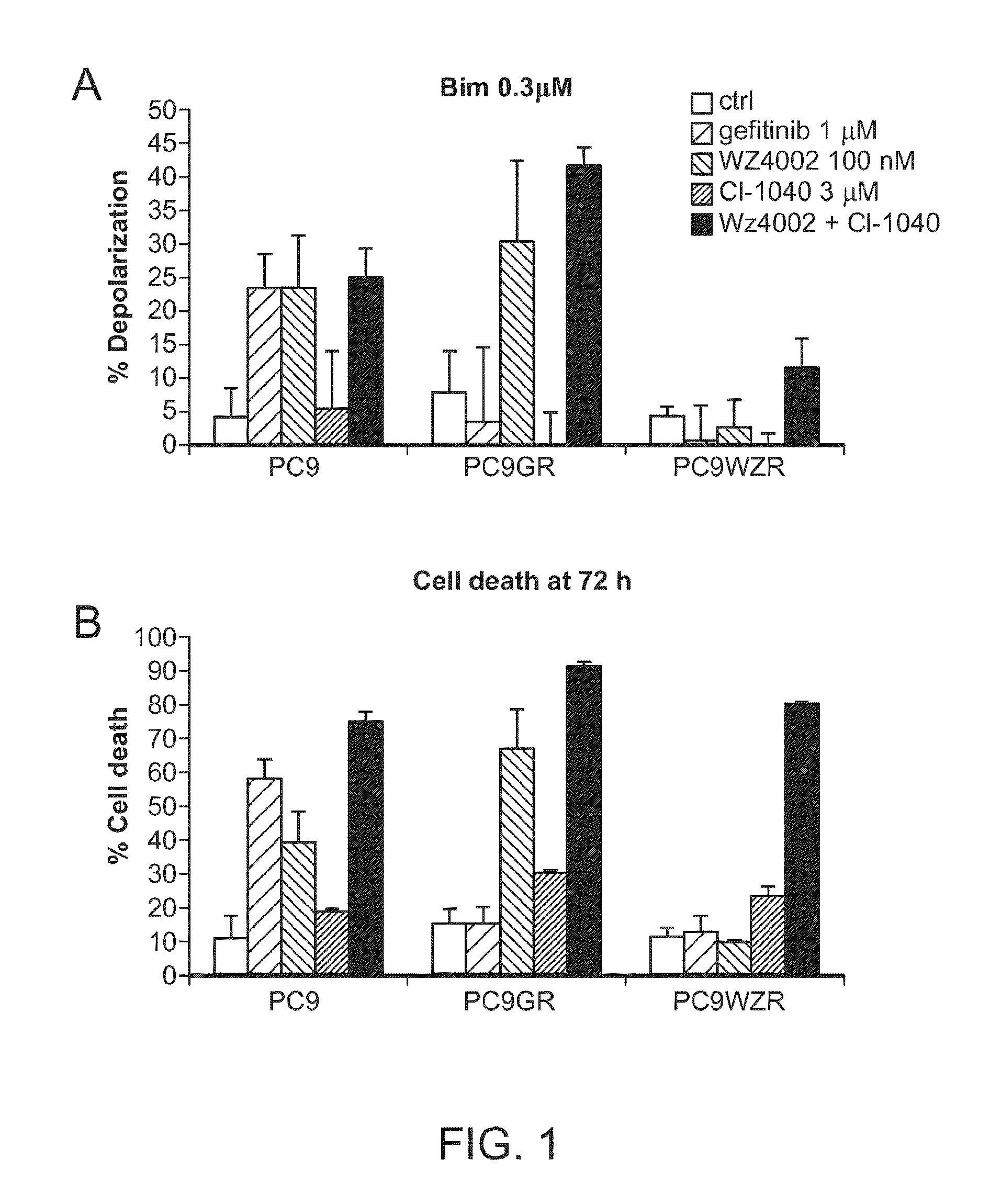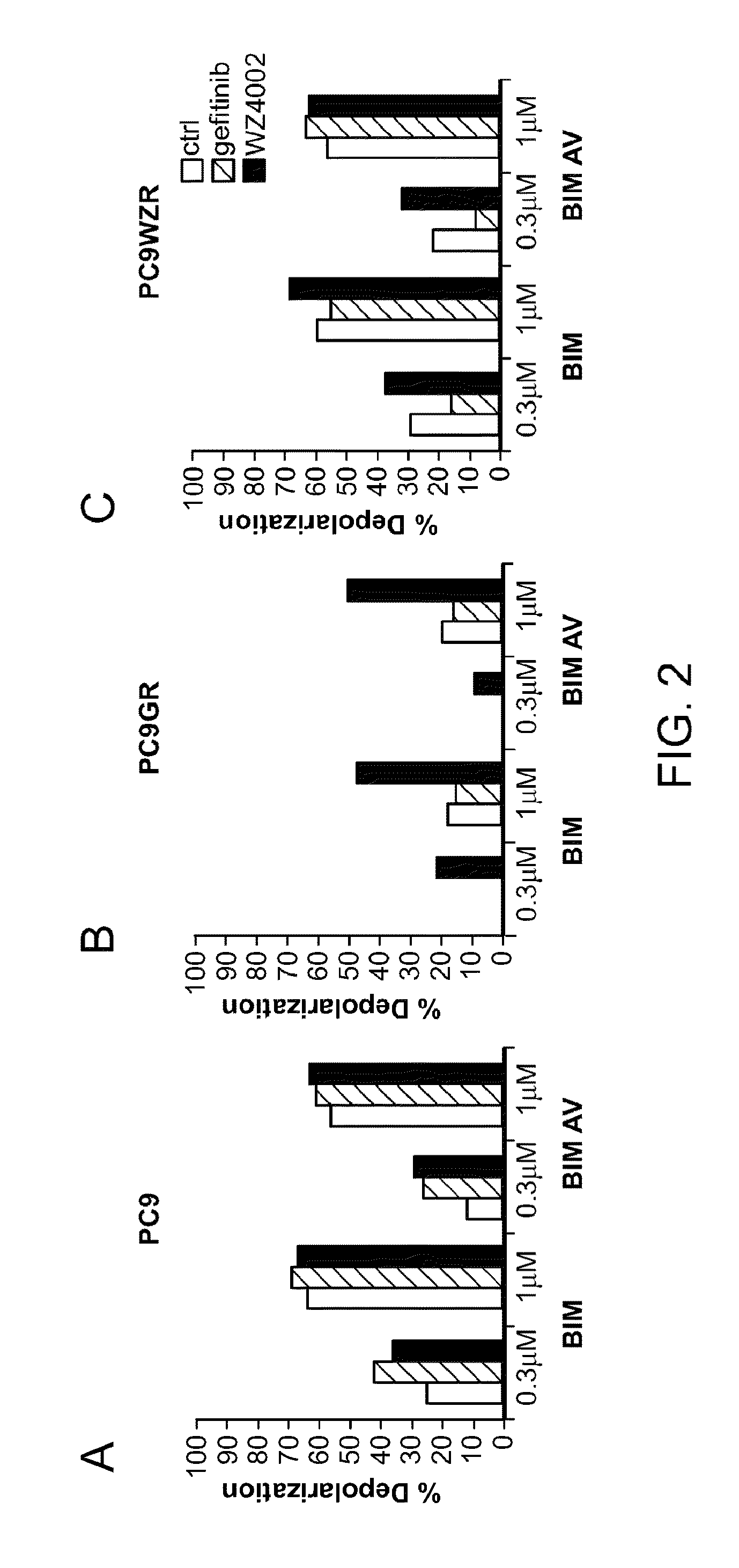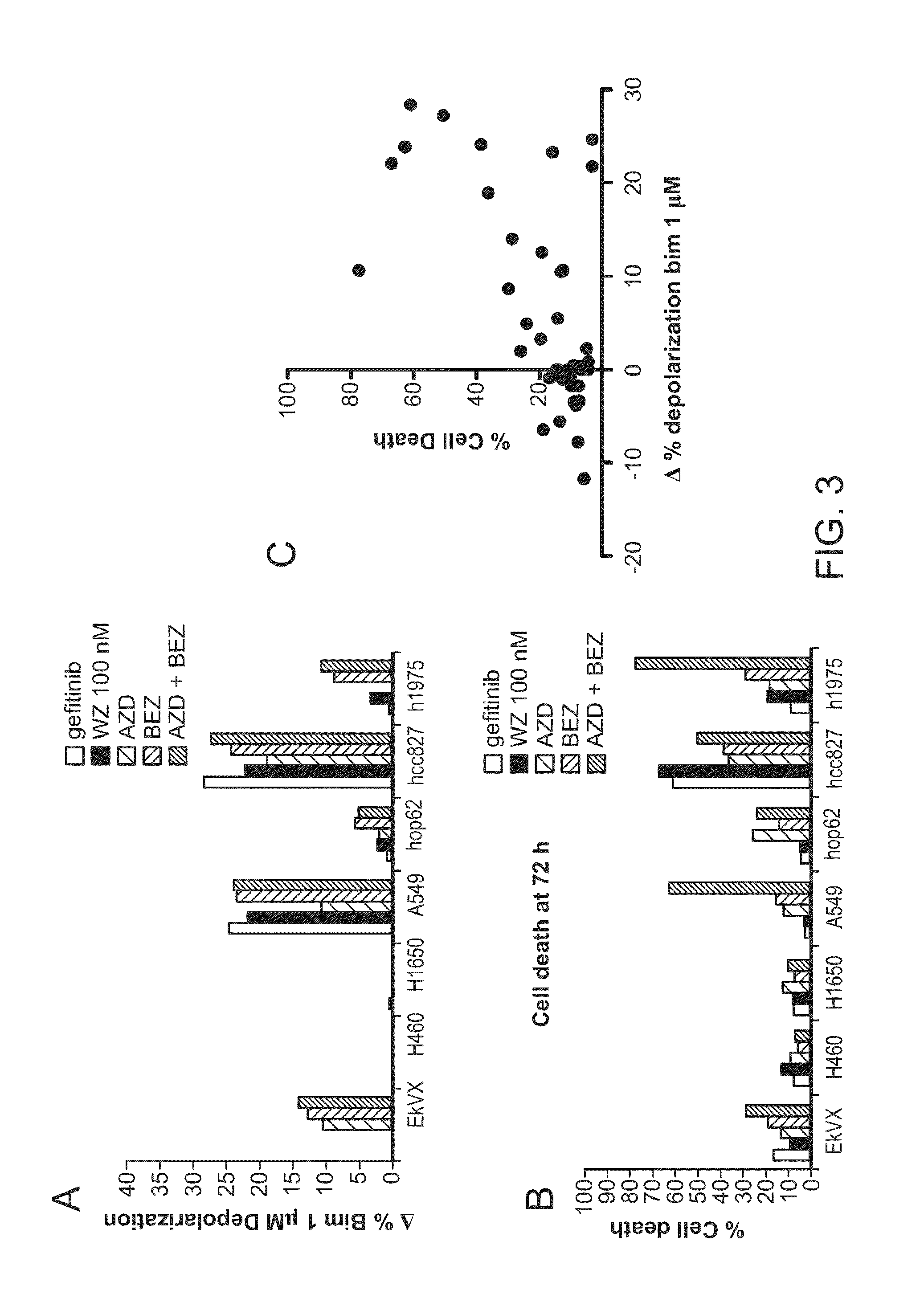Dynamic bh3 profiling
a bh3 and profiling technology, applied in the field of predicting the response to chemotherapy, can solve the problems of insufficient biomarkers available for cancer therapy, many targeted agents lack genetic predictive markers, and resistance to these drugs is often eviden
- Summary
- Abstract
- Description
- Claims
- Application Information
AI Technical Summary
Benefits of technology
Problems solved by technology
Method used
Image
Examples
example 1
Dynamic BH3 Profiling Predicts Sensitivity to Gefitinib and WZ4002
[0079]We have found in vitro that dynamic BH3 profiling is effective to predict sensitivity to TKIs gefitinib (Iressa) and the irreversible pyrimidine EGFR kinase inhibitor WZ4002 (that inhibits EGFR even when the T790M mutation is present) in the NSCLC cell lines PC9, parental and with acquired resistance (Zhou et al., Nature 2009).
[0080]Three different cell lines were used: PC9, PC9 gefitinib resistant (PC9GR, including the mutation T790M) and PC9GR resistant to WZ4002 (PC9WZR). As a test of our hypothesis, we asked whether cellular toxicity at a late time point of 72 hours could be predicted by a shift in mitochondrial priming at an early time point of 16 hours, a time well before overt cellular toxicity could be observed. We treated the cell lines with the two EGFR kinase inhibitors, gefitinib (1 μM) and WZ4002 (100 nM), for 16 hours and performed the dynamic BH3 profiling analysis. We observed that the BH3 peptid...
example 2
Dynamic BH3 Profiling Predicts Sensitivity to Imatinib
[0084]In order to prove its potential to predict chemotherapy response in different types of cancer, we also tested our hypothesis in cell line models Chronic Myelogenous Leukemia (CML). First we used the murine Ba / F3 cell line, parental and expressing the BCR-ABL fusion protein (p210), present in 95% patients with CML and can be effectively treated with the TKI Gleevec (imatinib). We treated both cells lines with imatinib 1 μM and we performed a dynamic BH3 profiling analysis. FIGS. 6C and 6D)
[0085]Using this same approach as in Example 1, we analyzed two human CML cell lines, K562 and Ku812, that constitutively express BCR-ABL, exposing them to imatinib and performing the dynamic BH3 profiling analysis. (FIG. 4)
[0086]Both K562 and Ku812 cell lines, showed an increase in priming in several peptides used, but as observed previously in NSCLC, a good correlation was observed between the increase in priming using Bim at low concentr...
example 3
Dynamic BH3 Profiling Predicts Sensitivity to Multiple Agents in Leukemia Cells
[0088]Using a variety of leukemia cells as a model, we tested the ability of dynamic BH3 profiling to identify agents that selectively cause cell death (FIG. 6). We found that dynamic BH3 profiling correctly identified drugs that would cause cell death across multiple drugs and cell lines.
PUM
| Property | Measurement | Unit |
|---|---|---|
| resistance | aaaaa | aaaaa |
| Δ | aaaaa | aaaaa |
| Δ% | aaaaa | aaaaa |
Abstract
Description
Claims
Application Information
 Login to View More
Login to View More - R&D
- Intellectual Property
- Life Sciences
- Materials
- Tech Scout
- Unparalleled Data Quality
- Higher Quality Content
- 60% Fewer Hallucinations
Browse by: Latest US Patents, China's latest patents, Technical Efficacy Thesaurus, Application Domain, Technology Topic, Popular Technical Reports.
© 2025 PatSnap. All rights reserved.Legal|Privacy policy|Modern Slavery Act Transparency Statement|Sitemap|About US| Contact US: help@patsnap.com



